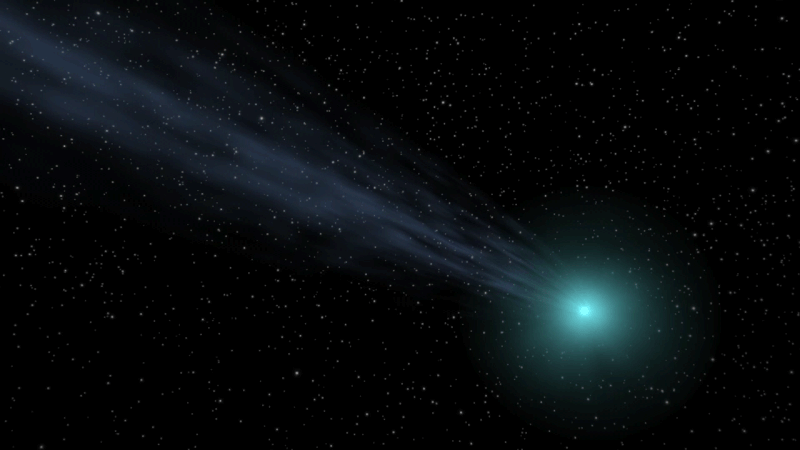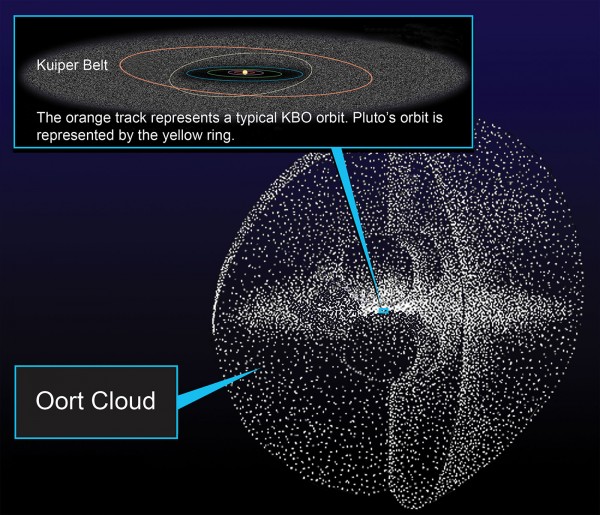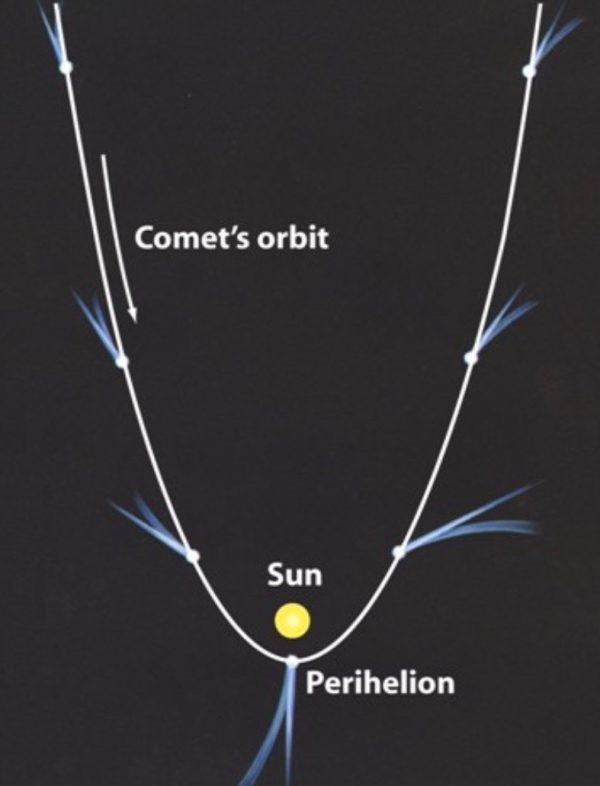
Early skywatchers had no idea where comets come from and sometimes considered them ill omens. Today’s astronomers know comets as small icy bodies orbiting our sun. Long-period comets – those with orbits around the sun of more than 200 years – are still very mysterious, but astronomers said this week that they’ve used data from NASA’s WISE spacecraft to take a step forward in understanding these icy visitors from the outermost solar system.
They said they learned that long-period comets are much more common than previously supposed, and that they are, apparently, substantially larger than a certain subset of short-period comets. The astronomers published their work on July 14, 2017 in the peer-reviewed Astrophysical Journal.
Long-period comets are thought to come from the Oort Cloud, which begins roughly 186 billion miles (300 billion km) from our sun. The Oort Cloud is too distant – and the comets within it are too small – to be observed directly by earthly telescopes. Astronomers do observe long-period comets approaching our sun from random directions in space, however, which is one reason the Oort Cloud is pictured as a shell, completely surrounding the solar system.

NASA’s Wide-Field Infrared Survey Explorer (WISE) spacecraft has performed the job of scanning the entire sky (twice) at infrared wavelengths. The primary mission phase ended in 2011, but astronomers still mine its wealth of data for studies of long-period comets, as well as a vast assortment of other space objects. In this week’s statement, NASA said scientists analyzing WISE data found that there are about seven times more long-period comets measuring at least 0.6 miles (1 km) across than had been predicted previously.
These scientists also observed that in eight months, three to five times as many long-period comets passed by the sun than had been predicted. James Bauer, lead author of the study and now a research professor at the University of Maryland, College Park, said:
The number of comets speaks to the amount of material left over from the solar system’s formation. We now know that there are more relatively large chunks of ancient material coming from the Oort Cloud than we thought.
Why do comets leave the Oort Cloud, to come careening close to our sun? NASA said the density of comets within the Oort Cloud is low, so the odds of comets colliding within it are rare. Long-period comets that WISE observed probably got kicked out of the Oort Cloud millions of years ago.

The scientists also found that long-period comets are on average up to twice as large as the so-called Jupiter family comets. These are a subset of short-period comets; they at some point passed near our solar system’s largest planet, Jupiter, and had their orbits shaped by Jupiter’s strong gravity. The result is that they now orbit the sun in less than 20 years. NASA said:
Astronomers already had broader estimates of how many long-period and Jupiter family comets are in our solar system, but had no good way of measuring the sizes of long-period comets. That is because a comet has a ‘coma,’ a cloud of gas and dust that appears hazy in images and obscures the cometary nucleus. But by using the WISE data showing the infrared glow of this coma, scientists were able to ‘subtract’ the coma from the overall comet and estimate the nucleus sizes of these comets.
The data came from 2010 WISE observations of 95 Jupiter family comets and 56 long-period comets.
The results reinforce the idea that comets that pass by the sun more often tend to be smaller than those spending much more time away from the sun. That is because Jupiter family comets get more heat exposure, which causes volatile substances like water to sublimate and drag away other material from the comet’s surface as well.

The scientists said the existence of so many more long-period comets than predicted suggests that more of them have likely impacted planets, delivering icy materials from the outer reaches of the solar system.
They said their results will be important for assessing the likelihood of comets impacting our solar system’s planets, including Earth. In 2013, the WISE mission was renamed NEOWISE. Its job now is to study Near-Earth Objects (NEOs), that is, objects with a potential to collide with Earth. Amy Mainzer, a co-author of the comet study based at NASA’s Jet Propulsion Laboratory in Pasadena, California, and principal investigator of the NEOWISE mission, said:
Comets travel much faster than asteroids, and some of them are very big. Studies like this will help us define what kind of hazard long-period comets may pose.
Bottom line: Long-period comets – which take hundreds or thousands or even millions of years to orbit our sun – are very mysterious. Scientists recently used WISE spacecraft data to learn that long-period comets are more numerous than had been predicted, and that they are about twice as large as Jupiter family comets, which take 20 years or less to orbit the sun.











